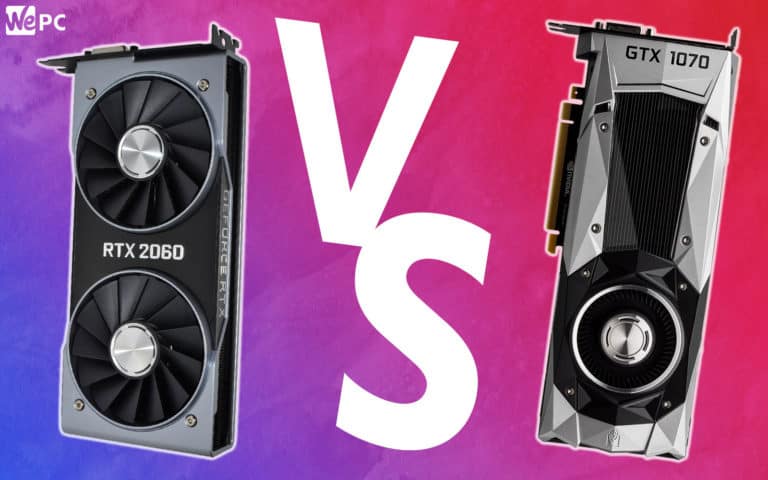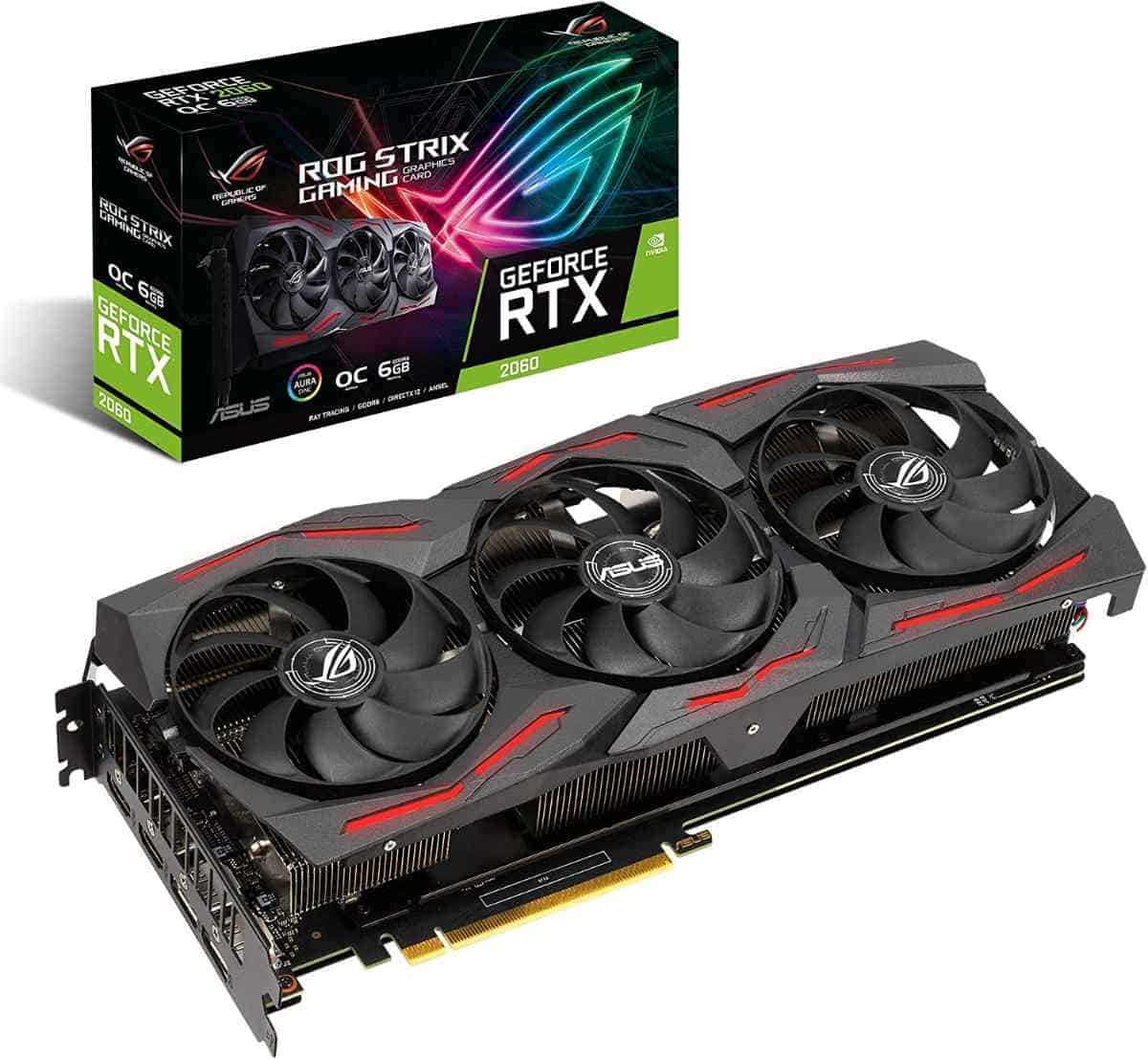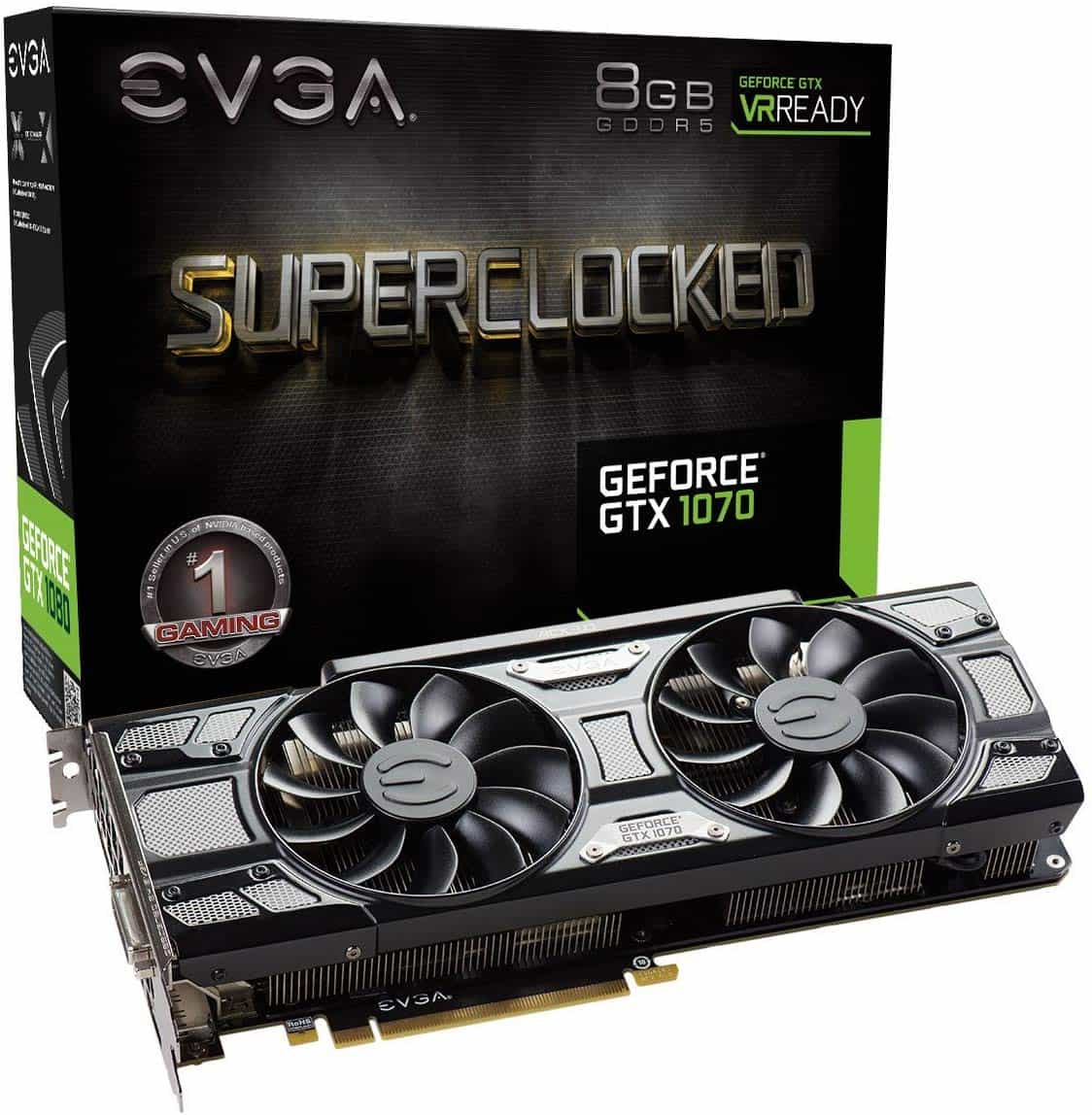RTX 2060 vs GTX 1070
This article compares and contrasts the differences between the GeForce GTX 1070 and the RTX 2060

Ever since Nvidia introduced their GeForce RTX series, many gamers have found themselves stuck between either upgrading to the RTX platform or sticking with the more affordable, yet ‘dated’ GTX technology.
If you’re a gamer currently facing this dilemma, fear not, because we’re here to offer a helping hand. Below, we’ve put the bestselling GTX of yesteryear, the 1070 against the RTX 2060, to help you decide which one is the best fit for you and your gaming needs.
From architecture, VRAM, resolution capabilities, and more, we’ve covered all bases to ensure you make the most informed decision. Read on!
Architecture
If you’re still getting your head around confusing technical jargon, the ‘architecture’ simply refers to the GPU model used and helps us to understand how fast and powerful the overall performance will be.
The RTX 2060 has fast become known as the most affordable out of all Nvidia’s RTX-series cards and features their innovative Turing architecture. Offering a significant step up to that of Pascal architecture, the RTX 2060 comes complete with upgraded-additions including AI-enhanced graphics, ray-trace enabling (more on that later) as well as an overall faster performance than older-generation cards.
This contrasts greatly against the older, GTX 1070, which is based on Nvidia’s Pascal architecture as part of their 10-series range. Pascal architecture offers a 3x faster performance over the likes of older-generation cards, such as the GeForce GTX 970, which is based on Maxwell architecture. Despite lacking much of the features needed to effectively handle 4K and ray-trace enabling, Pascal architecture is still regarded as one of the best and allows for beautiful, smooth graphics and immersive VR gaming at a 1440p to 1080p level.
How does that translate to the actual performance, though? Well, both cards will be able to offer fantastic performance at both 1440p and 1080p. However, you can be confident that the RTX 2060 will offer better performance due to its upgraded hardware and additional CUDA cores.
Cooling
Whether you plan on overclocking your card or simply want to understand how well it will be able to maintain a steady temperature without overheating, it’s important to check out the cooling systems that a card offers.
The RTX 2060 features innovative dual-axial 13 blade fans that will not only help to support the card and keep the card cool but will also be able to help achieve a steady and consistent airflow throughout the interior to prevent overheating. In addition to that, the GeForce RTX 2060 also offers a super quiet performance so, even if the card is under even the most intense gaming workloads, it won’t be noisy.
As for the GTX 1070, it features an aluminum casing that will help to prevent overheating, while its single-fan system will work to maintain a steady airflow. However, the only downside is that it tends to run loudly.
Resolution
When it comes to playing games at 1440p and even 1080p, both the RTX 2060 and GTX 1070 have more than enough capacity to reach a smooth and steady 60fps, although the GTX 1070 may require some tweaking to its default settings on the maximum resolution.
In addition, you’ll also find that the GTX 1070 will begin to show its age on the latest games, though it’s still a well-respected card for 1080p gaming. However, that’s not to say that GTX 1070 can’t handle heavy workload games such as Tomb Raider, it’s more than capable of reaching 60fps, but you’ll likely find that it will struggle to meet your demands as time goes on.
In contrast, the RTX 2060 is more adept at handling the demands of games of today and is, therefore, the ideal choice for those interested in investing in a card that will be able to handle next-generation gaming. The RTX 2060 will be able to handle smooth gaming at 60fps for even the most intense of workloads and even offers additional ray-tracing benefits, too.
Dimensions
To help you make sure that you know your current gaming rig will be compatible with the card you choose, here are the dimensions of both:
The GeForce RTX 2060 is 229 mm x 113mm x 35mm, and is connected to the rest of the gaming system by using a PCI-Express 3.0×16 interface. Similarly, the GTX 1070 is connected to the rest of the system by using a PCI-Express 3.0×16 interface, with its dimensions being 267mm x 112mm x 40mm.
Ray-Tracing
The next feature we’re going to take a look at is ray-tracing. Nvidia has paved the way for ray-tracing in graphics cards with their revolutionary transition from GTX to RTX. If you weren’t aware, real-time ray tracing refers to a technological process that is able to effectively emulate the way that light and shadow work in real life. This allows for a more immersive and realistic gaming experience, as it allows for light to appear within the game just as it would in real life, as well as reflections.
The RTX 2060 features the necessary hardware to enable this feature, though, as the ‘entry-level’ RTX, the ray tracing feature will struggle to match the performance of some of the better cards in the range. Nevertheless, it is still a step up to the GTX 1070, which features Pascal architecture and therefore lacks the necessary hardware to enable it.
VRAM
Now, for the technical part. In total, the GeForce RTX 2060 will offer you 1,920 stream processors (otherwise known as CUDA cores) 48 ROP units, 120 texture units, and 240 tensor cores, along with 6GB of GDDR6 memory. In comparison, the GeForce GTX 1070 also comes with 1,920 stream processors/CUDA cores and 120 texture units but has a slight power-upgrade with 64 ROPs and 8GB of GDDR5 memory.
On paper, it could be easy to say from these stats that the GTX 1070 is in fact the more powerful card. However, upon a closer look, you’ll notice that the 1070 lacks Tensor cores, something that the RTX 2060 contains.
The reason for this comes back to that Pascal architecture we touched upon earlier and means that the 1070, though powerful, lacks deep learning capabilities, so may struggle to keep up with the demands of the latest games. On the other hand, as the GeForce RTX 2060 is based on Nvidia’s latest Turing GPU architecture, it contains 30 RT cores to support DLSS and, of course, ray-tracing.
Final Words
All in all, the GeForce RTX 2060 is, overall, a much faster and more efficient card than the GeForce GTX 1070. Even though there aren’t too many games currently on the market that support both DLSS and real-time ray-tracing, just knowing that the RTX 2060 can support it makes it a worthwhile investment. Future-proof and power-efficient – it’s one of the best mid-range cards we’ve come across.





